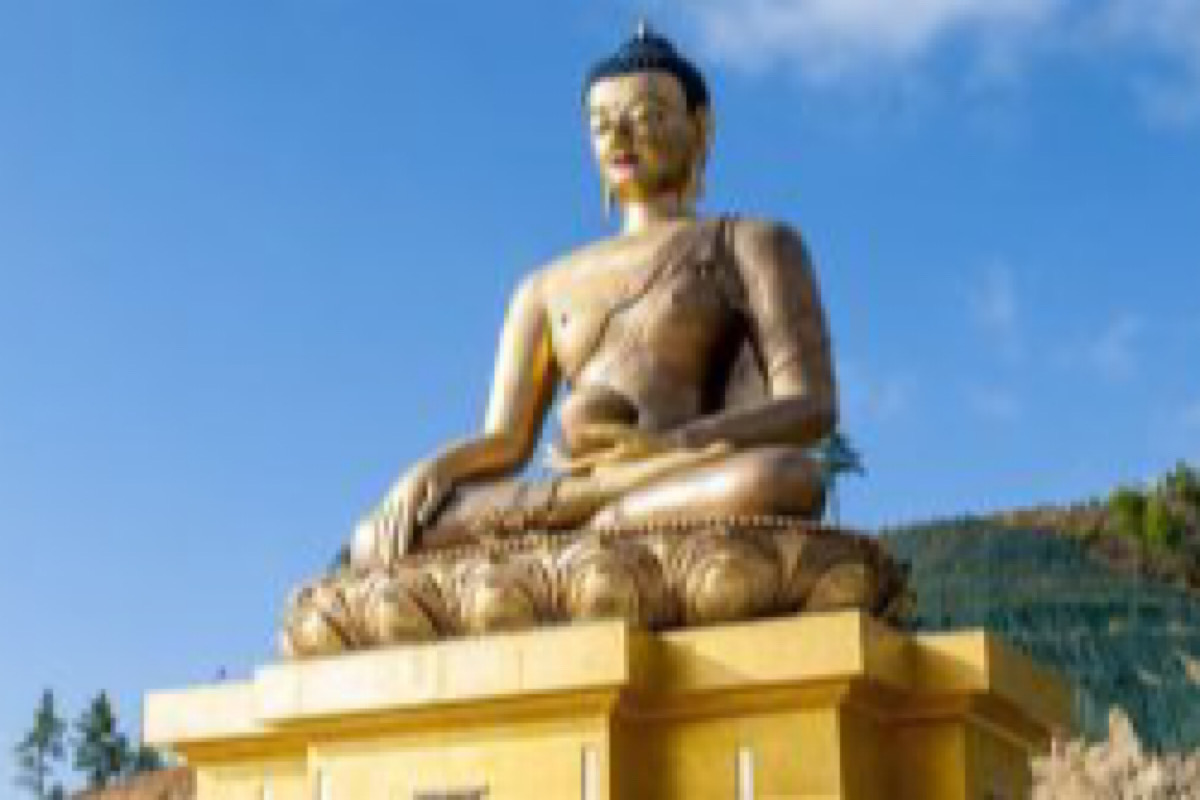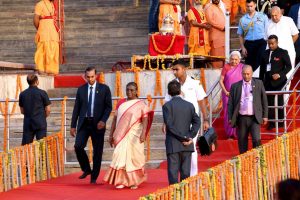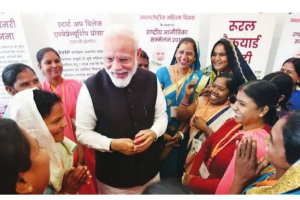Siddhartha Gautama spent almost his entire life after thirty working and wandering on foot in the Gangetic plain. He along with other monks travelled in cities and towns of this heartland and also in forests. The householders watched the wandering monks in orange robes on the streets to collect daily food. The four months of rains were the only deterrent. Ganges valley was the centre of modern civilisation in the sixth century BCE comprising of the renowned kingdoms like Kosala, Magadha and Videha. This region was the source of fertility and life of people. There was natural growth of towns and cities with urban development and increase in population at the time of the Buddha in the Gangetic plain.
Towns and cities were centres of administration and capitals of kingdoms. These were also the centres of business and trade resulting in presence of affluent people like merchants and bankers. The six great cities named in Buddhist literature were Sravashti, Saket (later called Ayodhya), Kaushambi, Kashi ( Varanasi), Rajagriha and Champa. Other renowned large towns were Kapilavastu, Vaishali, Mithila and Gaya. Gautama travelled through all these cities and towns during the last forty five years of life and preached his beliefs and thoughts.
The urban householders engaged in daily chores of life consisting of one doomed activity after another wanted solace in mind in religious beliefs, thoughts and activities. They used to take refuge as monks and lived in forests in the Gangetic plains. One school of thought, the believers in Upanishads, propagated that ignorance or lack of understanding of one’s true self was the root cause of problems, of human sufferings.
But as soon as a person became truly aware that his true self was entirely free, absolute and eternal, he achieved liberation. Suffering would no longer touch him. He would say ‘it suffers’ rather than ‘I suffer’. This was clearly an attractive ideology to someone like the Buddha. He retained some of the elements of this philosophy. But it was difficult for a householder to attain liberation. Another school of thought propagated by the Gangetic forest monks was that ‘desire’ was the first and most powerful cause of sufferings. A householder has no chance to get rid of desire as his whole life is guided by his longing for family, money and fame.
All his actions are inspired by desire. The three fires of greed, egotism and delusion kept the householders bound to ‘samsara’. Tied to this activity the householder had no hope of liberation. The best they could expect was lesser pain in the next life. Though the monks were in a better position, they too experienced some amount of desire. But the Gautama Buddha sacrificed his life for the betterment of the lives of man, animal and nature. He attained ‘nirvana’, the ‘Enlightenment’, a sense of ‘No self’, ‘Emptiness’; and preached ‘Dhamma’ not only among his disciples but also among common citizens. ‘Dhamma’ denotes not only ‘what is’ but also ‘what should be’.
The Buddha’s ‘Dhamma’ was a diagnosis of the problems and sufferings of mankind and a prescription for its cure. Buddhism was not a doctrine for privileged persons but a religion for the common people. The Buddha had great compassion for man and animal in his heart. He asked his disciples to go and travel for the welfare and happiness of the people. The cardinal virtue of Buddhism was compassion.
The virtue of compassion is centred round the principle of helping others in relieving their sufferings, to help them attain ‘nirvana’. The Buddha asked his disciples, the ‘bhikkhus,’ to stay together in commune, live in harmony with others. The ‘bhikkhus’ used to stay in the Sanghas, organisations of monks, situated at the outskirts of the towns, accessible by lay people but peaceful and secluded. Sanghas were the centres of spiritual discourse and meditation. The Buddhist monastic community initially was the wanderers. The short stays during monsoon months gradually developed into Sanghas which got patronage from the kingdoms, rich persons like bankers, merchants, and traders. These Sanghas gradually turned in to future years’ monasteries. Lay men and women would feed the monks and support them.
The householders “could give alms to ‘bhikkhus’ and thus build up a reserve of credit that could benefit them in the future” (Karen Amstrong: Buddha). The monks had to prove that they were not parasites but useful to the society. They would in turn teach lay people how to live a simple and moral life. This was the fair exchange accepted by all in society. Buddhist Sanghas had profound influence on individuals, to build up their own characteristic values and attitudes as well as on nation building. It acted as an instrument of social reengineering and value creation.
Therefore the Sanghas and bhikkhus became an integral and important part of society at the time of the Buddha. The wandering monk, the Buddha, had direct touch with the householders. He mingled with them and arranged teaching sessions for them in cities and towns. Gautama used to travel on roads accompanied by hundreds of bhikkhus. The Buddha did not confine himself in isolation after attaining ‘nirvana’.
He attained ‘nirvana’ not for himself only but to show the right path to the entire mankind to overcome grief and pain, to end suffering and sadness. He was concerned about the freedom and peace of the common man. Individualism loomed large in the society. He taught the escape route from desires and attachment; taught the way of peaceful living. His teachings won further adherents. Even the rulers, the monarchs too started admiring him, and became his followers. Siddhartha Gautama belonged to one of the royal families. He felt at ease in the company of kings and aristocrats.
King Bimbisara of Magadha offered him a kingdom. But Gautama refused a comfortable life. The ‘Noble Eightfold Path’ preached by Gautama was the way to achieve ‘nirvana’ from the world of sufferings. To follow this path a person must avoid evil actions that lead to negative consequences in life. The Buddha told people to be polite, sensible, and compassionate; to give alms to bhikkhus, to avoid debt, look after their dependents, save for emergency – the advices that are linked to the daily chores of life. People, businessmen, indeed everyone was advised to avoid alcohol, late nights, gambling, laziness and bad company. The Buddha’s teachings were well accepted by society. It was out in the towns and in the cities, along the trade routes.
People attracted to the Buddha’s teaching started to throng in large numbers to the Sanghas, which became a force to reckon with in the Gangetic plain. The Buddha’s teaching thus was not at all religious but to counter individualism that gathered momentum in society due to urbanisation and a cut-throat market economy. The Sanghas too played a crucial role in society to maintain ethics and honesty. The Buddha was creating an alternative way of life that was instrumental in eradicating the shortcomings of society. In that way the Buddha was more a social reformer than a religious preacher.
(The writer is a cost accountant working in a senior position with a public utility. The views expressed are personal.)











